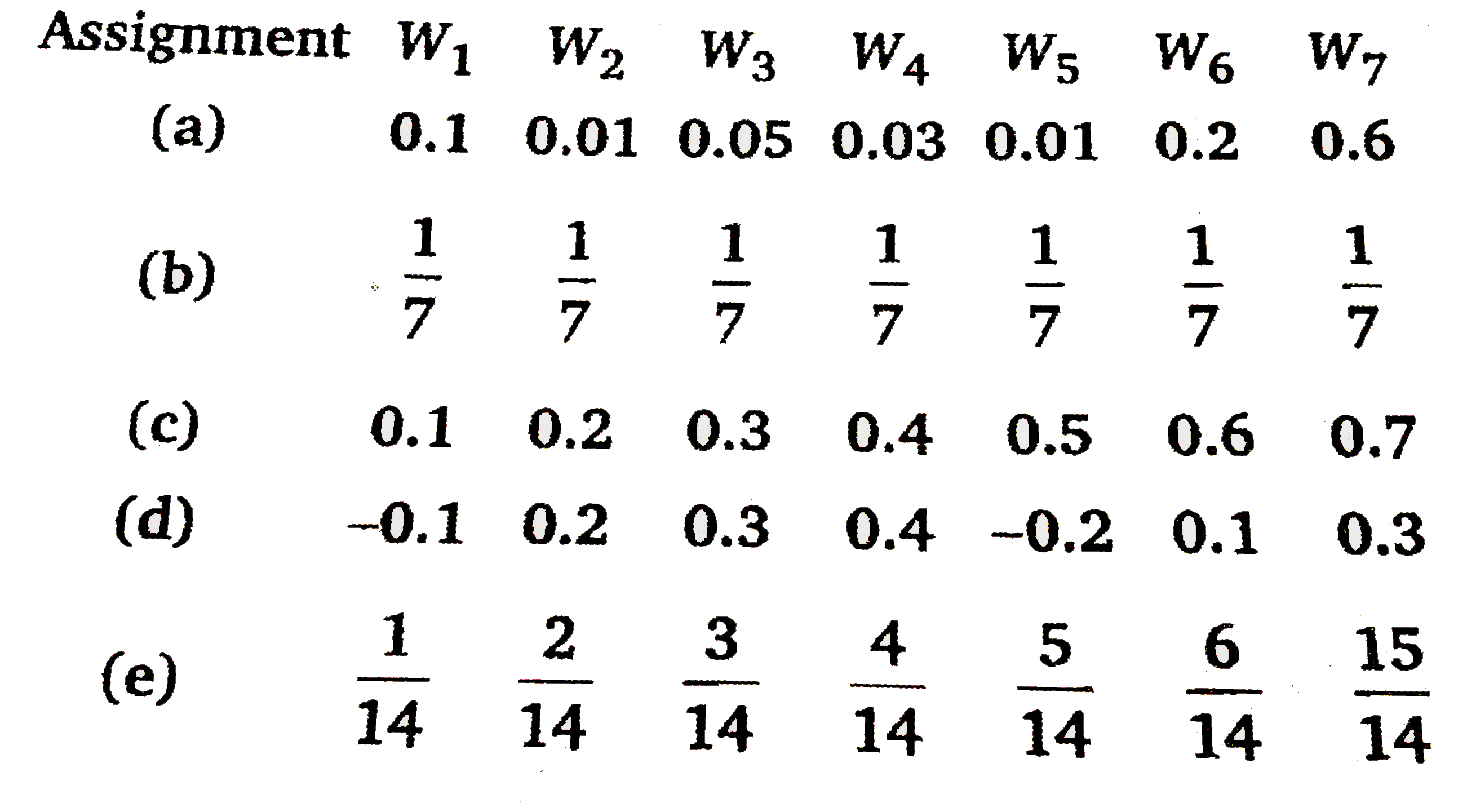The probability that at least one of the events AandB occurs is 0.6. If AandB occur simultaneously with probability 0.2, then find P(A)+P(B).Solution in Bengali
It is given that P(A∪B)=0.6 and P(A∩B)=0.2.
P(A∪B)=P(A)+P(B)−P(A∩B)
or 0.6=P(A)+P(B)−0.2
orP(A)+P(B)=0.8
or 1−P(¯¯¯A)+1−P(¯¯¯B)=0.8
or P(¯¯¯A)+P(¯¯¯B)=1.2
Topper's Solved these Questions
- BOOK - CENGAGE PUBLICATIONCHAPTER - PROBABILITY I EXERCISE - Solved Example9videos
PROBABILITY I
- BOOK - CENGAGE PUBLICATIONCHAPTER - PROBABILITY I EXERCISE - Exercise 9.16videos
PROBABILITY I
- BOOK - CENGAGE PUBLICATIONCHAPTER - PROBABILITYEXERCISE - All Questions470videos
PROBABILITY
- BOOK - CENGAGE PUBLICATIONCHAPTER - PROBABILITY IIEXERCISE - MULTIPLE CORRECT ANSWER TYPE6videos
PROBABILITY II
Similar Questions
When a fair dice is rolled, the number that comes up top is a number between one to six. Assuming we roll the dice once, to check the possibility of three coming up.
01:57View SolutionWhich of the following cannot be valid assignment of probabilities for outcomes of sample space S={W1,W2,W3,W4,W5,W6,W7}
 02:55View Solution
02:55View SolutionA coin is tossed three times, consider the following events. A : ‘No head appears’, B: ‘Exactly one head appears’ and C: ‘Atleast two appear’. Do they form a set of mutually exclusive and exhaustive events?
02:09View SolutionLet EandF be two independent events. The probability that exactly one of them occurs is 1125 and the probability if none of them occurring is 225. If P(T) denotes the probability of occurrence of the event T, then (a) P(E)=45,P(F)=35 (b) P(E)=15,P(F)=25 (c) P(E)=25,P(F)=15 (d) P(E)=35,P(F)=45
01:48View SolutionThe probability that at least one of the events AandB occurs is 0.6. If AandB occur simultaneously with probability 0.2, then find P(¯¯¯A)+P(¯¯¯B).
01:30View SolutionThe probability that at least one of the event A and B occurs is 0.6. If A and B occur simultaneously with probability 0.2, then find P(A)+P(B) .
03:25View SolutionThe probability that at least one of the events A and B occurs is 0.7 and they occur simultaneously with probability 0.2. Then, P(¯¯¯A)+P(¯¯¯B)=
03:00View SolutionThe probability that at least one of the events A and B occurs is 0.7 and they occur simultaneously with probability 0.2 . Then P(¯¯¯A)+P(¯¯¯B)=
01:22View SolutionThe probability that at least one of the events AandB occurs is 0.6. If AandB occur simultaneously with probability 0.2, then find P(¯¯¯A)+P(¯¯¯B).
02:17View SolutionThe probability that at least one of the events AandB occurs is 0.6. If AandB occur simultaneously with probability 0.2, then find P(¯¯¯A)+P(¯¯¯B).
03:41View SolutionThe probability that at least one of the events AandB occurs is 0.6. If AandB occur simultaneously with probability 0.2, then find P(A)+P(B).
02:32View SolutionThe probability that at least one of the event A and B occurs is 0.6. If A and B occur simultaneously with probability 0.2, then find P(A)+P(B) .
02:04View SolutionThe probability that at least one of the events A and B occurs is 0.6. If A and B occur simultaneously with probability 0.2 then P(A')+P(B') is
02:35View SolutionThe probability that at least one of AandB occurs is 0.6. If AandB occur simultaneously with probability 0.3, then find the value of P(A′)+P(B′).
03:33View SolutionThe probability that at least one of the events A and B occurs is 0.6.
If A and B occur simultaneously with probability 0.2, then find P(A)+P(B).02:21View SolutionThe probability that atleast one of the events A and B occurs is 0.6. If A and B occur simultaneously with probability 0.2, then P(¯¯¯A)+P(¯¯¯B) is
04:54View Solution

